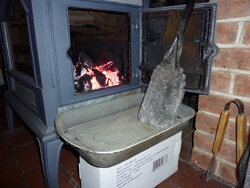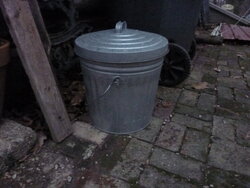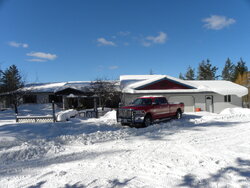How well do ash drawers work? I have no problem scooping out the ash myself, but it seems most stoves come with them, so I guess I don't have a choice.
The stove we'll probably buy this week is the Osburn 1600. I've read some people don't bother with the ash drawer, but if we're going to have one, it'd be nice if it does the job well.
But my main concern is an ongoing one: How to keep the ash pile safe outside. We would normally scoop out the ash into a bucket and let the bucket cool down for a week outside before emptying it out in the ash pile. But sometimes I've found buried embers.
With how dry it's been in California (despite recent rain storms), we're concerned about a fire hazard. Someone's ash pile started a forest fire on our road a few years back. They did what they've always done, dumped the ash in the same place, but maybe they didn't wait as long for it to cool down. I'm not sure. No houses were lost, but it came close.
How do you manage your ash pile and keep it safe? With an ash drawer, you need to put it back before you can fire up the wood stove, right? So this means dumping ash before it's had time to cool down. If I'm going to end up transferring the fresh ash into a bucket, then why bother with the drawer?
The stove we'll probably buy this week is the Osburn 1600. I've read some people don't bother with the ash drawer, but if we're going to have one, it'd be nice if it does the job well.
But my main concern is an ongoing one: How to keep the ash pile safe outside. We would normally scoop out the ash into a bucket and let the bucket cool down for a week outside before emptying it out in the ash pile. But sometimes I've found buried embers.
With how dry it's been in California (despite recent rain storms), we're concerned about a fire hazard. Someone's ash pile started a forest fire on our road a few years back. They did what they've always done, dumped the ash in the same place, but maybe they didn't wait as long for it to cool down. I'm not sure. No houses were lost, but it came close.
How do you manage your ash pile and keep it safe? With an ash drawer, you need to put it back before you can fire up the wood stove, right? So this means dumping ash before it's had time to cool down. If I'm going to end up transferring the fresh ash into a bucket, then why bother with the drawer?






